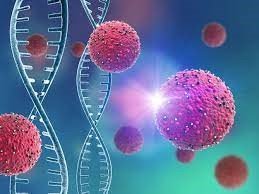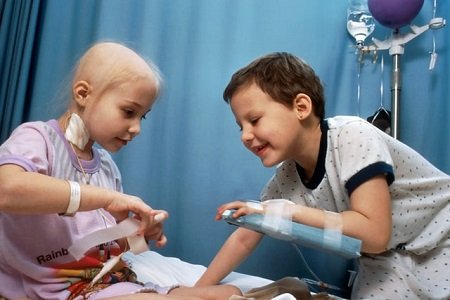Blood from the umbilical cord from one child is the potential life saving treatment for their siblings. The first cord blood stem cell transplant was in 1988 when one sibling received stem cells from the other to treat their Fanconi Anaemia. Since then, there has been much research worldwide to establish the effectiveness of using stems cells from the cord blood for siblings.
Researchers believe that the stem cells can successfully treat more than 80 serious illnesses such as sickle cell anaemia and leukaemia.
The outlook is very optimistic. Siblings are genetically close and banking the cord blood from one sibling will be a 100% match for themselves in the future and up to a 75% match for their sibling.
Cord Blood For Siblings

When can cord blood really make the difference?
Cord blood has many bonuses including the fact that it rarely contains any infectious diseases. Also it is much more likely to be accepted by the recipient’s body than adult stem cells plus –
‘ The fluid is easy to collect and has 10 times more stem cells than those collected from bone marrow.’
There are a number of medical conditions that can be successfully treated with stem cells, but It is critical that the stem cells used are a close match.
The stem cells are infused into the patient’s bloodstream, where they change into the necessary cells to boost the body’s immune system. This is so that it can effectively fight the disease and repair or replace any badly damaged cells so that the patient recovers.
 For stem cells in the umbilical cord blood to be compatible it must contain certain proteins (genes). These are called called HLA markers (Human Leukocyte Antigens).
For stem cells in the umbilical cord blood to be compatible it must contain certain proteins (genes). These are called called HLA markers (Human Leukocyte Antigens).
These HLAs are passed on genetically by a baby’s parents, with half the genes being inherited from the mother and the other half, from the father.
A good genetic match is essential if the stem cells are going to be accepted by the recipient body’s immune system.
Using the stem cells donated by a sibling is ideal because genetically the match between siblings is the closest. Whilst a perfect match is the most ideal situation, some stem cell treatments can be successful even if there is not a 100% match.
Are there any problems using cord blood of siblings?
While siblings’ blood offers a much better chance of being a close match, the children must be ‘whole’ brothers and sisters and not ‘half’ as this reduces the chance of a good match.
Whole siblings have a 25% that they will be a complete match and a 50% chance of being a 50% match. Interestingly, they also have a 25% chance that they do not match at all.
When can cord blood be used for siblings?
 Stem cells from cord blood can be used for the newborn baby or their siblings. Some serious illnesses can only be treated with the child’s own cord blood. This is known as ‘autologus’. Other illnesses need to be treated with the stem cells from the cord blood of a sibling which is called ‘allogenic’.
Stem cells from cord blood can be used for the newborn baby or their siblings. Some serious illnesses can only be treated with the child’s own cord blood. This is known as ‘autologus’. Other illnesses need to be treated with the stem cells from the cord blood of a sibling which is called ‘allogenic’.
The range of conditions that can be treated allogenically include leukaemia and lymphoma and cancers.
There is a third type of transplant which is known as a ‘Haploidentical transplant’. This type of transplant is becoming very common because for it to be successful, there only needs to be a 50% match between donor and recipient. Thus making it possible for the donor to be a parent, child or sibling.
Cord blood is just one of three sources of blood-forming stem cells that surgeons use in transplants. Bone marrow is also used and ‘peripheral’ blood, which is blood that circulates throughout the body.
Cord blood for siblings is favoured because it carries a much lower chance of developing GVHD – graft-versus-host disease. The Miracle Cord website explains that this is a very serious condition that occurs when the healthy cells in the donor tissue attack the immunocompromised cells in the body of the recipient.
If this occurs, there is nearly 50% chance that the patient will die. Miracle Cord also quotes the important statistic that children having a transplant using blood matched from a sibling have less than a 10% chance of developing GVHD.
Is it still best to bank cord blood for each of my children?
 It is important to consider banking cord blood for each of your children, especially if your family has a history of any medical conditions that can be successfully treated with stem blood cells.
It is important to consider banking cord blood for each of your children, especially if your family has a history of any medical conditions that can be successfully treated with stem blood cells.
The reason for this is that there is the chance that your children – even if they are full brothers and sisters – may not be good matches.
Although banking cord blood for siblings is not cheap, it will definitely give you the peace of mind that you are safeguarding each of your children against more that 80 known serious medical conditions that can be treated by an infusion of cord blood stem cells.
Miracle cord explains how the chances of a good match increase too –
‘The more siblings with banked cord blood, the more chance you have of finding a match for transplants or other therapies for which sibling stem cells are an option or in fact required.
The probability of finding an HLA-identical sibling donor depends on the number of siblings: While the likelihood of a perfect match is 25% for patients with one sibling, it goes up to 44% for those with two siblings, 58% for those with three, 68% for those with four, and up to 90% for patients with eight siblings’.
Final Thoughts – Cord Blood For Siblings
Certainly, the discussion about cord blood and its uses will continue for many years to come. However, one point that researchers are delighted to have found is that cord blood can be very beneficial for siblings with a serious medical condition that can be treated with stem cells…



